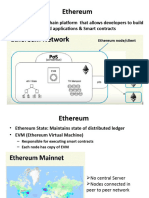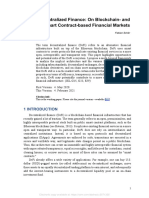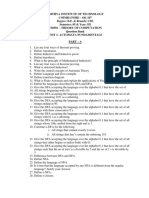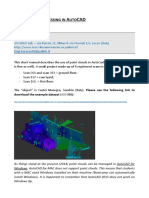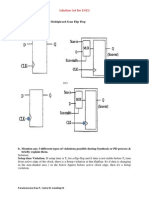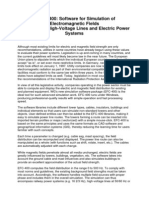0% found this document useful (0 votes)
27 views9 pagesUnit 3
The document outlines various decentralized organizational structures including Decentralized Organizations (DO), Decentralized Autonomous Organizations (DAO), Decentralized Autonomous Corporations (DAC), and Decentralized Autonomous Societies (DAS), highlighting their characteristics and functionalities. It also discusses Decentralized Applications (DApps), their requirements, operations, and examples, as well as the Ethereum Virtual Machine (EVM) and smart contracts, detailing their execution and potential issues. Additionally, it addresses challenges in Solidity language and the execution environment of the EVM.
Uploaded by
Nandikaa GaneshCopyright
© © All Rights Reserved
We take content rights seriously. If you suspect this is your content, claim it here.
Available Formats
Download as PDF, TXT or read online on Scribd
0% found this document useful (0 votes)
27 views9 pagesUnit 3
The document outlines various decentralized organizational structures including Decentralized Organizations (DO), Decentralized Autonomous Organizations (DAO), Decentralized Autonomous Corporations (DAC), and Decentralized Autonomous Societies (DAS), highlighting their characteristics and functionalities. It also discusses Decentralized Applications (DApps), their requirements, operations, and examples, as well as the Ethereum Virtual Machine (EVM) and smart contracts, detailing their execution and potential issues. Additionally, it addresses challenges in Solidity language and the execution environment of the EVM.
Uploaded by
Nandikaa GaneshCopyright
© © All Rights Reserved
We take content rights seriously. If you suspect this is your content, claim it here.
Available Formats
Download as PDF, TXT or read online on Scribd
/ 9













































